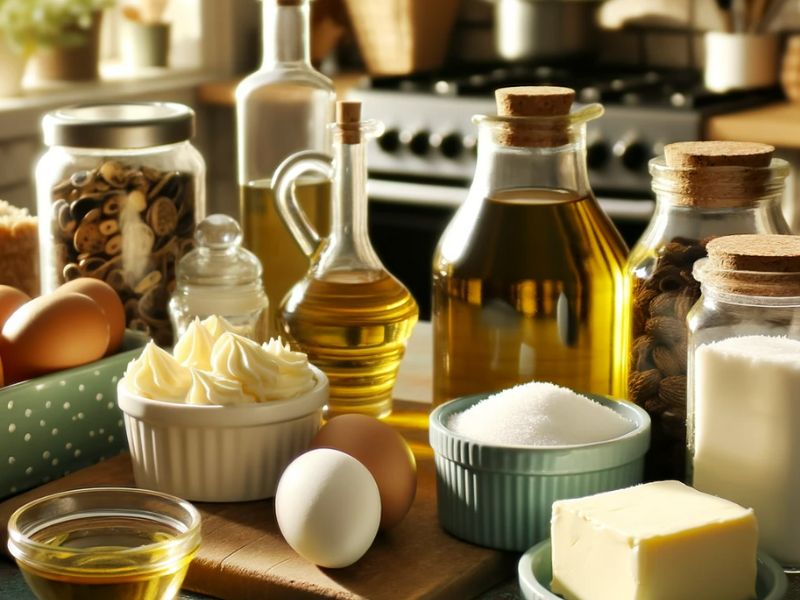Have you ever thought about why we need to use fats and oils in baking? Fats and oils aren’t just extra things we throw into our baking mix; they play an important role in making everything come out just right. They’re the secret behind the moistness of cakes and the flakiness of pastries. Without fat in our baking, cakes would come out dense and dry, and pastries would lose their flakiness. Fats are crucial for that tender, moist texture we crave in our baked goods.
- Why is it Necessary to Use Fats and Oils in Baking?
- Fats and Oils Influence Texture and Crumb
- Different fats and oils work in different ways.
- Fats and Oils Help Incorporate Air
- Fats and Oils Influence Flavor
- Fats and Oils Contribute to Richness and Moisture
- Proper Use of Fats and Oils in Baking
- Final Thoughts
Why is it Necessary to Use Fats and Oils in Baking?
Picture baking without any fats – no butter, oil, or shortening. This would significantly affect the quality of baked goods. Fat is necessary for giving our favorite treats their texture and flavor. Without it, cakes would become dense and dry instead of tender and moist. Cookies would lose their rich taste and might end up hard or too crisp, lacking the satisfying melt-in-your-mouth feel. Pastries, usually flaky, would become tough and chewy, as fat is key for their light, airy layers. Even bread would not be as soft and pliable without fat. In short, eliminating fat from baking would take away the enjoyable experiences we love in baked treats
Fats and Oils Influence Texture and Crumb
Ingredients like butter, oil, shortening, and lard all make baked goods tender and moist. Without adequate fat, baked goods are more likely to turn out dense or dry with a tough, chewy texture that is unpleasant.
Gluten is the protein makeup that gives baked goods their shape. But too much gluten makes some baked goods tough and chewy. That is where fat comes in to save the day. The fat coats the flour proteins and interferes with gluten development, resulting in a softer crumb.
.
Different fats and oils work in different ways.
- Butter creates flaky layers and a tender, delicate crumb. The milk solids in butter help with aeration, while the fat coats proteins. Butter is excellent for items like croissants, pie crusts, tart shells, biscuits, and scones where you want flakiness.
- Oil produces supremely moist baked goods with a close, tight crumb rather than large air pockets. The crispness of the structure helps cookies hold their shape, and cakes maintain an even tender crumb from edge to center. Oils like canola or vegetable oil excel in cookies, most quick breads, and high-moisture cakes.
- Shortening offers a neutral flavor and a very tender yet stable crumb. The consistency of shortening allows it to fully coat flour proteins and restrict gluten development. So, it works well for cake mixes and pastries where a blank flavor canvas is wanted.
Choosing the right baking fat for the job has a tremendous effect on achieving your desired mouthfeel when you take that first bite. Lard makes an incredibly tender, flaky pie crust, while cold butter suits biscuits best. Oils keep cakes moist. Make sure to match your fats and recipes wisely based on the influence to texture and crumb.
Wondering if you can substitute melted shortening for vegetable oil? Find out more here.
Fats and Oils Help Incorporate Air
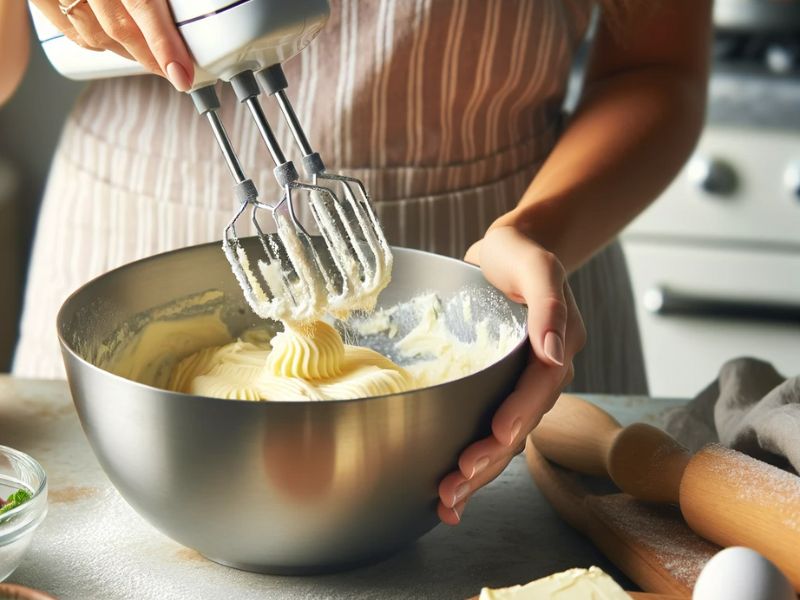
In baking, adding air to your batters and doughs is important for them to rise well in the oven. Fats play a big role in this. When you cream solid fats like butter with sugar, the fats create and hold air bubbles. This is similar to how whipped cream traps air. As the batter cooks, steam makes these fat-coated air bubbles expand, helping the baked item rise and take its final shape.
Without enough fat, batters can’t hold much air, leading to denser and less fluffy baked goods.
Creaming butter well forms air bubbles, and adding extra egg whites or baking soda can also aid in rising. But, without fat, these air bubbles won’t stay intact or expand enough, resulting in flat cakes or cookies.
So, if your cakes aren’t rising properly or your cookies are flat, it could be due to not enough creamed fat. Fat is key for both texture and helping baked goods rise by trapping air. Watch the video below.
Fats and Oils Influence Flavor
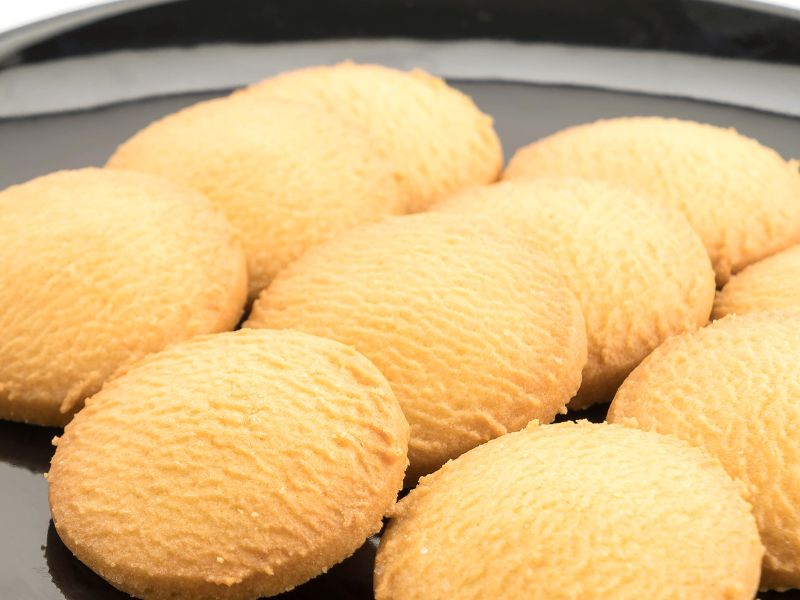
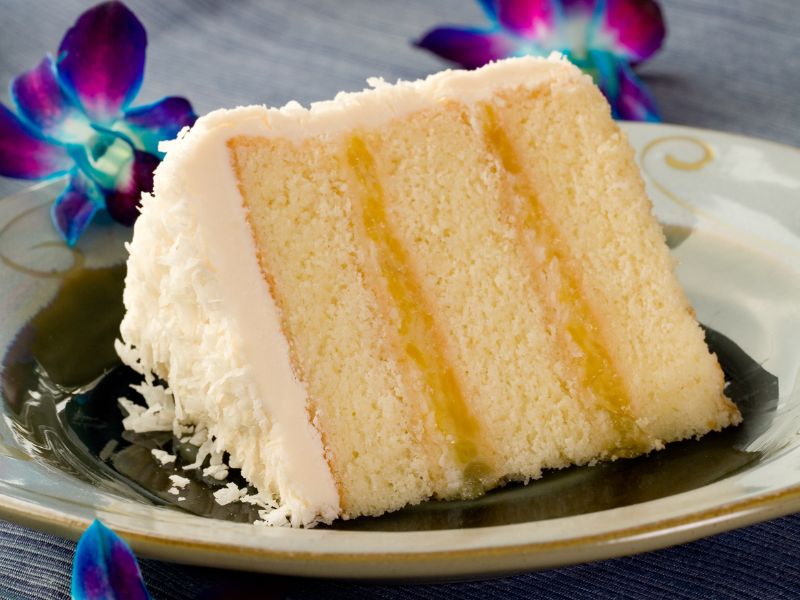
Fats and oils are key for adding flavor to baked goods. Take butter, for example; it gives a rich taste and aroma to items like butter cookies, croissants, and buttercream frosting. The milk solids in butter add depth, and its fat evenly spreads these flavors.
Different oils add their unique tastes, too. Extra virgin olive oil brings a nutty, grassy flavor to oil-based cakes and breads. Coconut oil adds a hint of tropical sweetness, ideal for cookies or bars. Even neutral oils like vegetable oil help blend flavors smoothly.
Fats and oils also ensure flavors are evenly mixed in a bake. For instance, they prevent the clumping of flavors like vanilla extract, ensuring a smooth, uniform taste. In chocolate chip cookies, the butter base is important for blending the chocolate and brown sugar flavors. Similarly, the spices in carrot cake are mixed into the cream cheese frosting for a perfect blend.
Fats not only improve the taste but also help combine moisture and flavors evenly, enhancing the overall experience. Using fresh, adequate amounts of fat can greatly improve the aromas and flavors in your baked goods. So, don’t skimp on the fat in recipes. Without it, a cake could lose its moistness, and croissants would just be plain bread. Let fats like butter, quality oils, or good shortening bring out the best in your baking.
Fats and Oils Contribute to Richness and Moisture
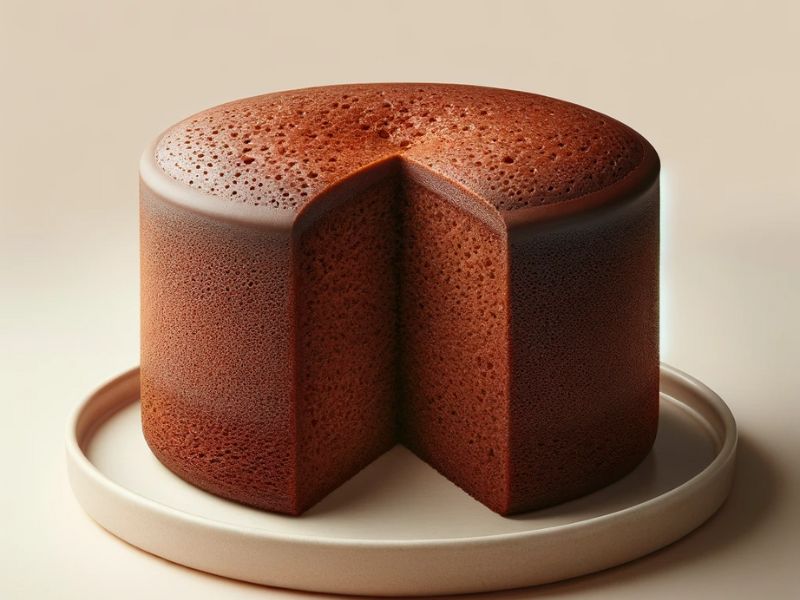
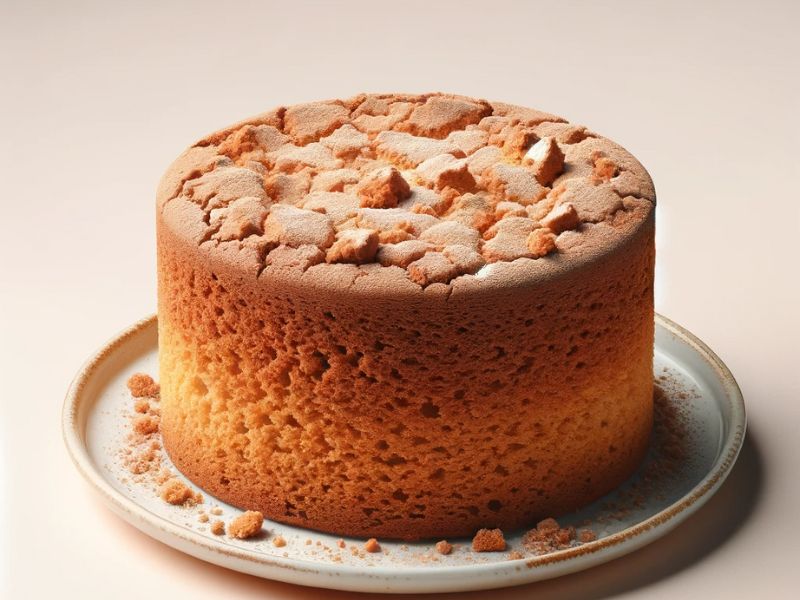
Fats and oils make baked goods rich and moist. Imagine a birthday cake made with oil compared to a dry one made just with egg, flour, and sugar. The difference is clear!
Fats add a smooth, luxurious feel, ensuring moisture is spread evenly in baked goods, from the center of a cake to the edges of cookies. This prevents problems like dry spots in cakes or cookies that spread too thin and don’t hold together well.
By creaming butter properly, for example, you ensure your batter bakes evenly, resulting in tender, evenly-cooked cakes and cookies. Without enough fat, cookies won’t set properly or keep their shape.
So, using quality fats not only adds richness but also ensures the right level of moisture throughout your bake. They’re the key to perfect pound cakes, fudgy brownies, and bakery-style cookies.
Remember, for the best results in baking, use room-temperature quality butter, cream, or light oil, and notice how every texture improves. For home bakers, fats are an essential tool for delicious treats.
Proper Use of Fats and Oils in Baking
🔥 Baking Fats & Oils: Know Your Smoke Points 🔥 |
|
|---|---|
| Refined Avocado Oil | 520°F (271°C) |
| Refined Almond Oil | 495°F (257°C) |
| Refined Sunflower Oil | 450°F (232°C) |
| Vegetable, Safflower, or Peanut Oil | 450°F (232°C) |
| Butter & Virgin/Unrefined Oils | 350°F (177°C) or less |
| Brought to You by wearebaking.com | |
Understanding the importance of fats and oils in baking, here are some simple tips for using them the right way:
- Mind the Smoke Points: The temperature at which they start to burn. Different oils have different smoke points.
- For high-heat baking, choose oils with higher smoke points, like refined avocado oil (520°F), almond oil (495°F), or sunflower oil (450°F).
- Use butter and virgin oils, which have lower smoke points (350°F or less), for lower-heat baking.
- Measure Accurately: Always weigh fats for precision instead of relying on volume measurements. This ensures consistency in your baking. Also, ingredients should be at the right temperature – like room temperature oil or properly softened butter.
- Choose the Right Fat for the Bake: Match the fat type to the recipe. Butter is great for most cookies, while oil is better for moist cakes or muffins. Shortening is good for frying and gives a neutral taste. Use flavorful fats like coconut oil for a tropical twist in some recipes.
- Store Fats Properly: Keep butter refrigerated and tightly wrapped for up to 3 months. Store oils in cool, dark places for up to 6 months, and keep shortening sealed near the fridge.
Following these tips will help you achieve delicious and consistent baking results. For more detailed guidance on selecting baking fats, check out the Joy of Baking website for a comprehensive guide on various fats, including their smoke points, flavors, and best uses.
Final Thoughts
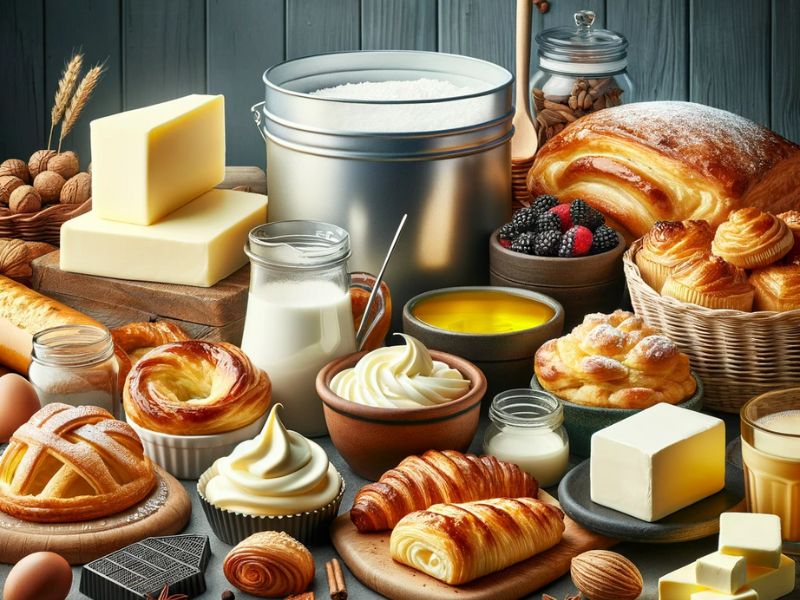
Fats and oils are completely necessary for baking up delicious treats with the perfect tender bite and varied flavors. They seriously influence texture, airiness, moisture, and so much more.
Without adequate fats, you’d really miss out on those light cakes, melt-in-your-mouth cookies, crispy tarts, and everything else that makes baking such a wonderful art and science.
Be generous when creaming butter and measuring oil. Don’t skimp on quality ingredient amounts – your taste buds will thank you through each delicious bite!
Match fats and oils carefully to recipes. Consider the influences on flavor, texture, and method needed for best results.
Store fats properly for freshness. Wrap butter airtight, keep oils away from light and heat, etc. Using rancid fats can ruin baking outcomes.
I hope this information clarifies the important roles that fats and oils, have in baking. Rely on these essentials for a successful batch of cookies, cakes, or other sweet treats.
Please leave me a comment below. I would love to hear your thoughts on the necessity of fats and oils in baking.
And As Always
Keep On Baking!
Taianne
Share the Love

I’m Taianne, the owner and operator behind We Are Baking. Baking my first cake at age 11 hooked me on creating sweet treats. Though my interest faded during childhood, it was rekindled when I married my apple pie-loving husband. I love trying new recipes, tweaking classics, and helping others learn the science and art of baking. I started We Are Baking to share tips, tricks, and favorite recipes I’ve discovered over the years. When not in the kitchen, I enjoy spending time with family and friends. My goal is to inspire others to embrace their creativity through baking. Feel free to contact me with any questions!
Taianne@wearebaking.com

